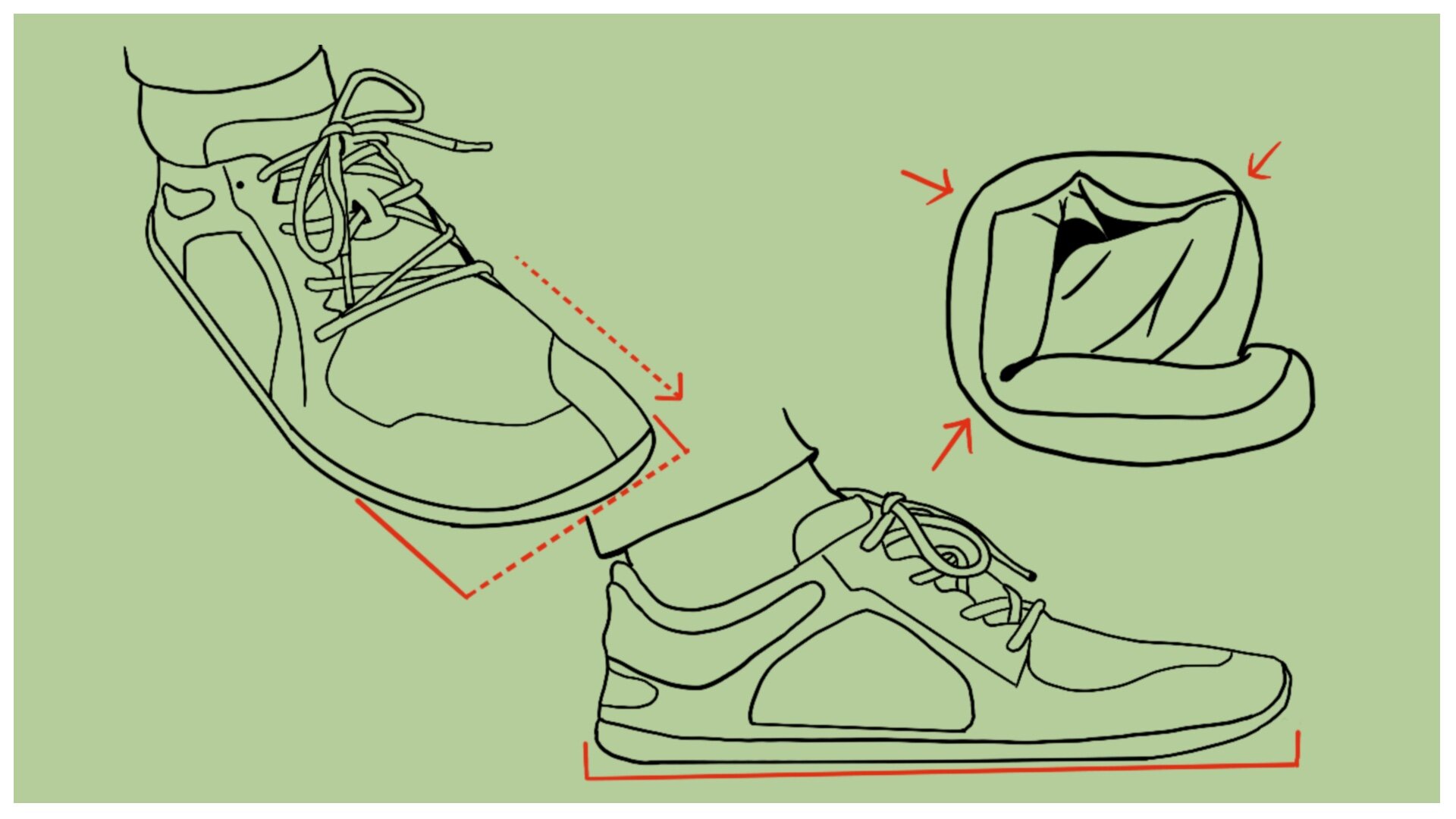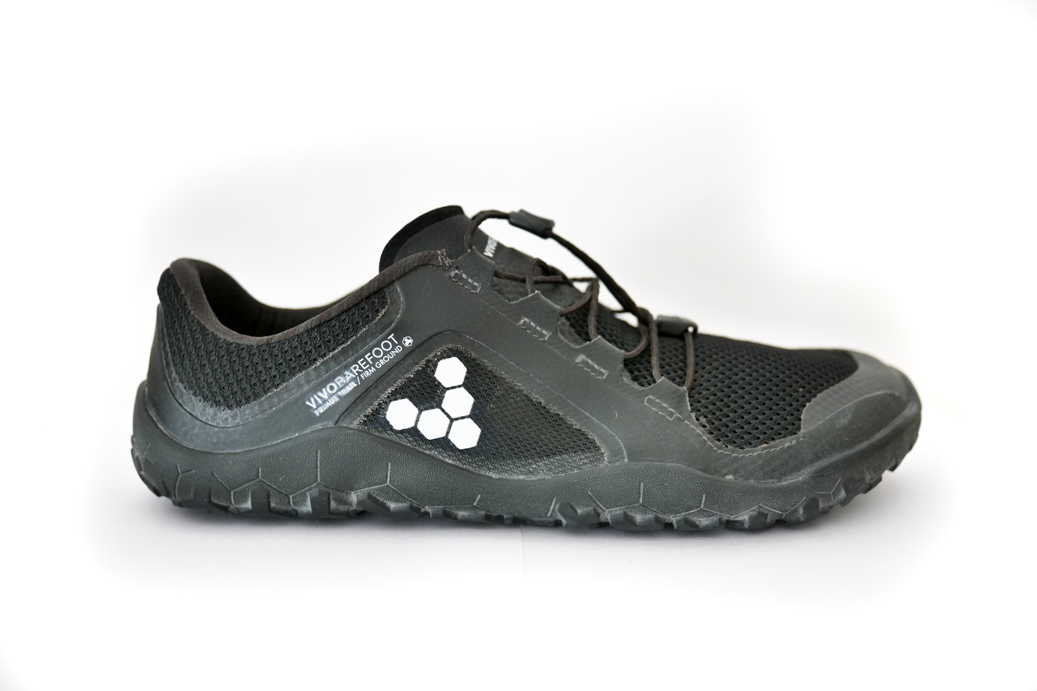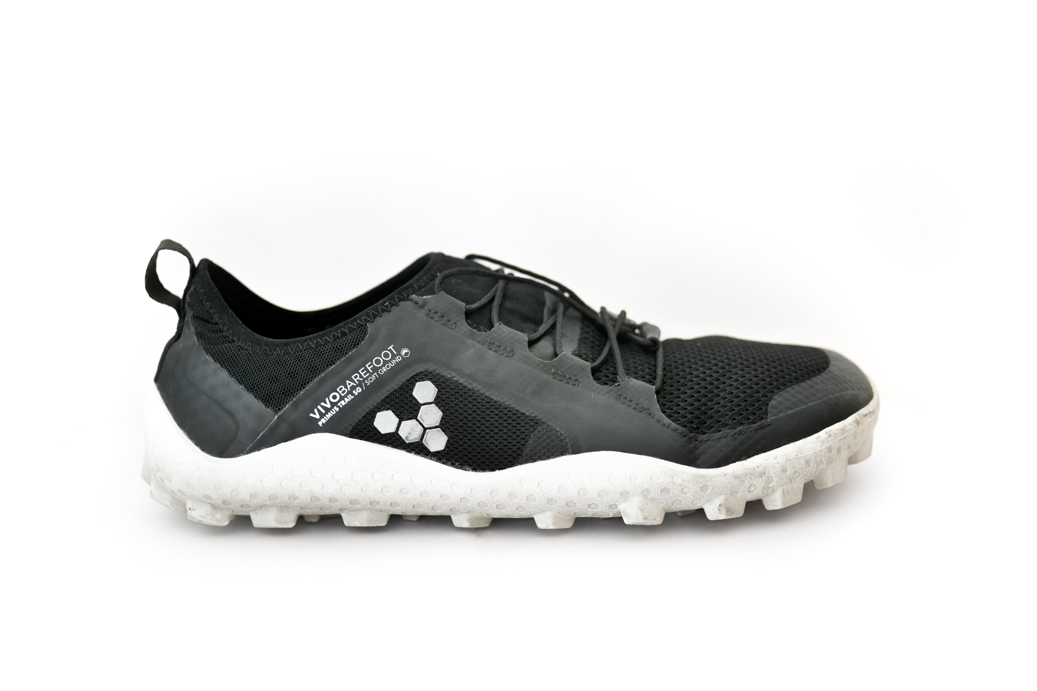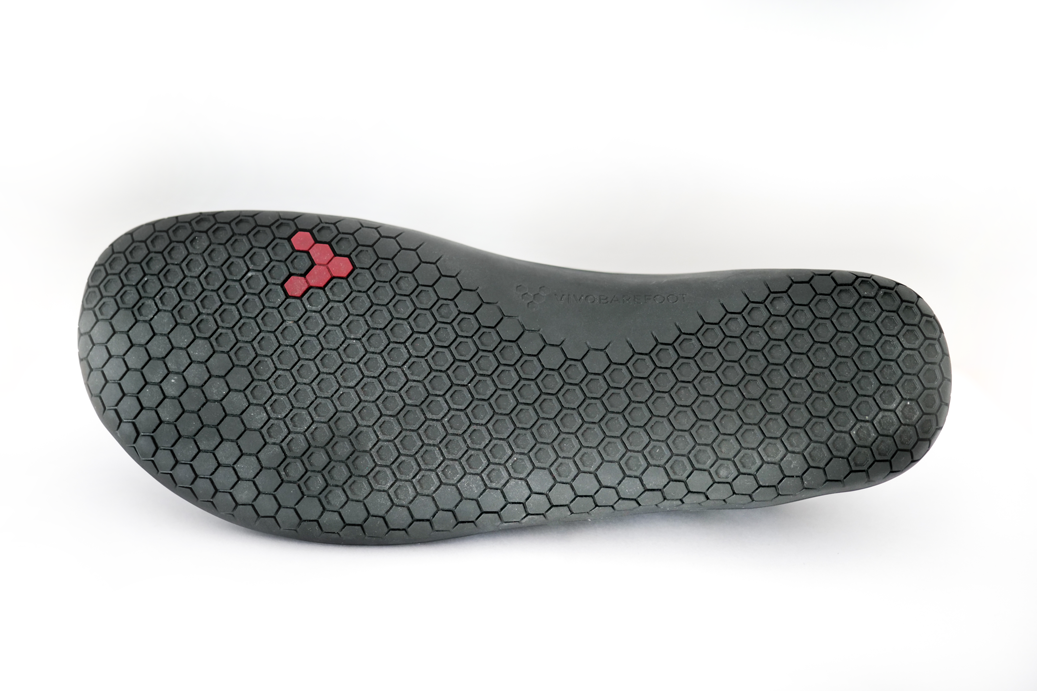The Best Barefoot Running Shoes | Vivobarefoot Review
Written by Christopher Ioannou, BSc (Hons) Sports & Exercise Science
Reading Time: 9 minutes
Table of contents
The video version of this post:
What are The Best Barefoot Running Shoes?
This is a question that many of us have on our minds, including myself. To be honest, it's a tough one to answer, because it depends on many factors – and it can be quite personal too.
So, in this post I'm going to take the three most popular running shoes from the most popular barefoot shoe company, Vivobarefoot, and put them through their paces to see if we can find what we’re looking for in a barefoot running shoe.
Let's get started.
The Best Barefoot Running Shoe Features
Before scripting this review, I asked myself what I wanted from barefoot running shoes. After much thought I came to the following conclusions:
1. Excellent Ground Feel
Since I consider myself a barefoot runner, I need to feel as if I'm running as close to barefoot as possible, even though I have shoes on my feet.
It’s almost like having my cake and eating it.
2. Wide Toe Box
If any of you have watched our educational videos on barefoot running, you'll know how important it is to have a shoe that can accommodate toe spread.
3. Comfortable
Now, I obviously don't mean a soft, spongy sole type of comfort. Rather, I'm talking about a shoe that's not going to give me blisters, awkward calluses, or any other problems after long runs.
4. Puncture-resistant soles
The point of wearing barefoot shoes as opposed to going completely barefoot is for the shoes to protect the feet from getting damaged due to sharp and dangerous terrain. If a pair can't do that, then I might as well scrap the shoes altogether and save myself the cash.
That brings me to my next point.
5. Value For Money
Please don't rip me off. That's all I have to say.
The final two points actually relate to the overall value of the product.
6. Durable
I’m not a pro marathon runner, clocking hundreds of km per week. Therefore, I expect at least 18 months to two years of life from my running shoes.
And now for the final feature…
7. Aesthetically Pleasing
Since I am spending all this money on my barefoot running shoes, it would also be nice if they were appealing enough to wear out with a pair of jeans or shorts too.
Kind of a two-in-one shoe, if you will.
This is why I've never bought Vibram FiveFingers. While they are probably great running shoes, I just couldn't see myself wearing them in any other scenario.
Comment below if you agree or disagree with me on this.
Vivobarefoot Review
Alright, let’s see if Vivobarefoot can meet my... “basic” needs.
Vivobarefoot Running and Trail Shoes
Figure 2 - Vivobarefoot Running and Trail Models
I have three of their models, each of which are made with subtle design differences to accommodate various running scenarios. The first is the Primus Lite II's, which are road and indoor running shoes.
Then there is the Primus Trail FG (the FG stands for Firm Ground). These are trail running shoes for dry and rocky mountain trails.
The last pair are the Primus Trail SG (which stands for… you guessed it! Soft Ground). The trail SGs are suitable for running on grass, in mud, or on any other soft, marshy surface.
While most people won't need all three, believe it or not, I do. I'll take you through my running regime in just a minute to explain why.
I'll also give my feedback on whether all three models have performed well in these differing situations.
1. Vivobarefoot Sole Thickness
Okay, so, in terms of ground feel, all three shoes sport a very minimal 3mm rubber sole.
Figure 3 - Vivobarefoot Trail Firm Ground Sole Thickness
However, the Trail FG have extra 3mm lugs for extra grip and protection during trail runs on rocky surfaces, giving them a total thickness of 6mm from foot to ground.
Figure 4 - Vivobarefoot Trail Soft Ground Sole Thickness
The Trail SG have even thicker 5mm lugs, to help grip soft, moist ground, making its total sole thickness 8mm.
Figure 5 - Vivobarefoot Primus Lite II
Personally, for casual everyday wear, I like the Primus Lite, mostly because it is the slickest sole at just 3mm in total thickness, hence giving me the most ground feel. I also found them to be the best for road running.
However, I'm a keen trail runner too and I find that I can't handle rocky surfaces in the Primus Lites, especial running downhill.
While, the Primus FG, with those 3mm lugs give just enough protection and grip to make running down a rocky hill pain free. So, the FGs work great for their intended purpose.
Now, I'm not a spartan racer, and I live in a very dry climate, so the SG's wouldn't normally be a first choice for me.
Figure 7 - Vivobarefoot Trail Soft Ground Performance
However, I recently joined a futsal club, where we play once a week on Astroturf. Since, to the best of my knowledge, barefoot soccer shoes don't exist, the Trail SG's are the next best thing.
So far, they are holding up great. The 5mm lugs give me all the grip I need to quickly change direction without slipping, while the tight neoprene sock design helps the shoe stay tight against my foot, reducing the chance of rolling my ankle.
I guess now you can understand why I use three different pairs of running shoes.
2. Vivobarefoot Toe Box
Figure 8 - Vivobarefoot Wide Toe Box
All three pairs are equally wide, with exactly the same shape toe box. I have my 1:1 scale cut-out of my toes, so let’s see how they match up...
Figure 9 - Vivobarefoot Primus Lite and Trail models toe box comparison
Ehh, it's kind of on the borderline. There could be a little more room in the shoes.
I also don't have a very wide foot, so I’m not sure if a Vivobarefoot shoe would work for people with very broad feet. This being said, I do use the very thin inner sole they provide in the box.
When I remove the inner sole, it definitely increases the space within the shoes.
3. Vivobarefoot Comfort Level for Running and Trail
In terms of comfort, all three pairs have been great. As I said before, the Primus Lites give the most amount of ground feel, which I enjoy for everyday casual use and road running.
Figure 10 - Vivobarefoot Trail Soft Ground Hard Stitching on the Heel
The only issue I had was with the trail SGs. There is some rough stitching on the inside of the heel wall, and I made the mistake of wearing ankle socks to a soccer game one week. I had no skin on my heels by the end of the game.
Since then, I have made sure to wear longer socks, which has resolved this issue.
Figure 11 - Vivobarefoot Trail models come with Elasticated Laces
The trail shoes all come with elasticated laces, but the package includes normal laces too.
Honestly, I like the elasticated laces because I can easily get the perfect fit each time and they are easy to slip on and off.
I wish the Primus Lites came with the option of both laces too.
Figure 12 - Vivobarefoot Primus Lites Shoe Laces
4. Vivobarefoot Patented Puncture Resistant Soles
Figure 13 - Vivobarefoot Patented Puncture-Resistant Sole
One stand-out feature: Every Vivobarefoot running shoe has the brand’s patented puncture-resistant soles.
So, despite the fact that they are so thin, I haven't worried about stepping on something sharp and cutting my feet to pieces. This is a huge plus for me, since the only reason I even wear shoes outside the house is to protect my feet from danger.
5. Cost of Vivobarefoot Running Shoes
Figure 14 - Vivobarefoot Adult shoes price range
I must say, though, it would be a lot cheaper if we could just walk around everywhere barefoot. A pair of Vivobarefoot running shoes ranges between $145-$160.
Now, that is without the 12% Vivobarefoot discount code we got for our viewers.
Use Code ‘EHEALTH12’ on Checkout page of their website.
But, it's still a lot of money and I want to know if it's worth the investment.
Figure 15 - Nike Running Shoes Price Range
If we look at things objectively and take, say, the Nike brand as a comparison, Nike shoes are valued at around the same price point for their higher end models. In fact, some of their running shoes even reach the $200+ price point.
So, it's not like Vivo's are out of line with the market standards for high-quality footwear.
And, really, that's what it’s about with Vivobarefoot. You get their patented puncture-resistance rubber soles and premium, eco-friendly materials, such as in their Bio models, which are made from corn and algae.
Figure 16 - The Vivobarefoot Primus Bio soles are made with Algae and Corn material
Yes, you heard right, corn and algae… making them pretty unique in the industry.
6. Durability of Vivobarefoot Shoes
But, as my dad always says: The proof is in the pudding.
If a running shoe can't handle 18-24 months of abuse from me, then it’s not worth my investment.
Figure 17 - Vivobarefoot condition after 15 months of use
So, I have an older pair of Primus Lites which I got 15 months ago, and they have been my go-to road-running and casual pair ever since.
As you can see, they are a little tired, but still in decent shape. The soles are what impress me the most. They’ve held up really well, despite all the running. However, this is the aftermath of sliding down a rope during a Crossfit workout one day. These shoes are not designed for rope climbing...
Figure 18 - Vivobarefoot overall condition after 15 months of use
The rest of the shoe looks great, though. No serious wear and tear can be seen anywhere. I reckon I could get maybe another 6-12 months of use out of them.
7. The Style of Vivobarefoot Shoes
Finally, we need to look at aesthetics.
Figure 19 - Vivobarefoot Primus Lite II model
The Primus Lites steal the show here. They are really good-looking shoes. I receive tonnes of compliments when I wear them, and have even had family and friends move over to barefoot shoes because they liked the look of these shoes so much.
This really adds to the value of the pair, since they are both my road-running and casual shoes.
Figure 20 - Vivobarefoot Trail Soft Ground model
The trails are a little more hardcore looking, but are not ugly either. I've also heard that they work well as work shoes, such as in restaurants and retail stores, where there is often water on the floor.
Figure 21 - Vivobarefoot Trail Firm Ground model
The space between the 3mm lugs prevents water from being trapped under the sole, which can prevent slipping – an important feature to have in that setting. It's definitely an interesting use for the trail FGs.
Final Thoughts
So, all in all, Vivo's offerings satisfy my needs for barefoot running shoes.
Are they the best barefoot running shoes available?
Well, in my opinion, they are definitely up there with the best right now and I'm excited to see what Vivobarefoot bring out in the future.
If you are new to barefoot running, we have also created a program to help you get your body prepared and adapted to the barefoot gait, while avoiding common injuries such as plantar fasciitis, hamstring pulls or achilles tendonitis.
We cover everything, including hip and ankle flexibility, and glute activation and strengthening.
We show you how to build your foot arches and use proper running technique, and finish off with a precise 24-week barefoot running plan that anyone can follow, regardless of their current running program or fitness level.
Link to this program:
Well, that's it from us today. I hope y'all enjoyed this review!
If you want to see more from us in the future, you can subscribe to our YouTube channel and join our newsletter.























